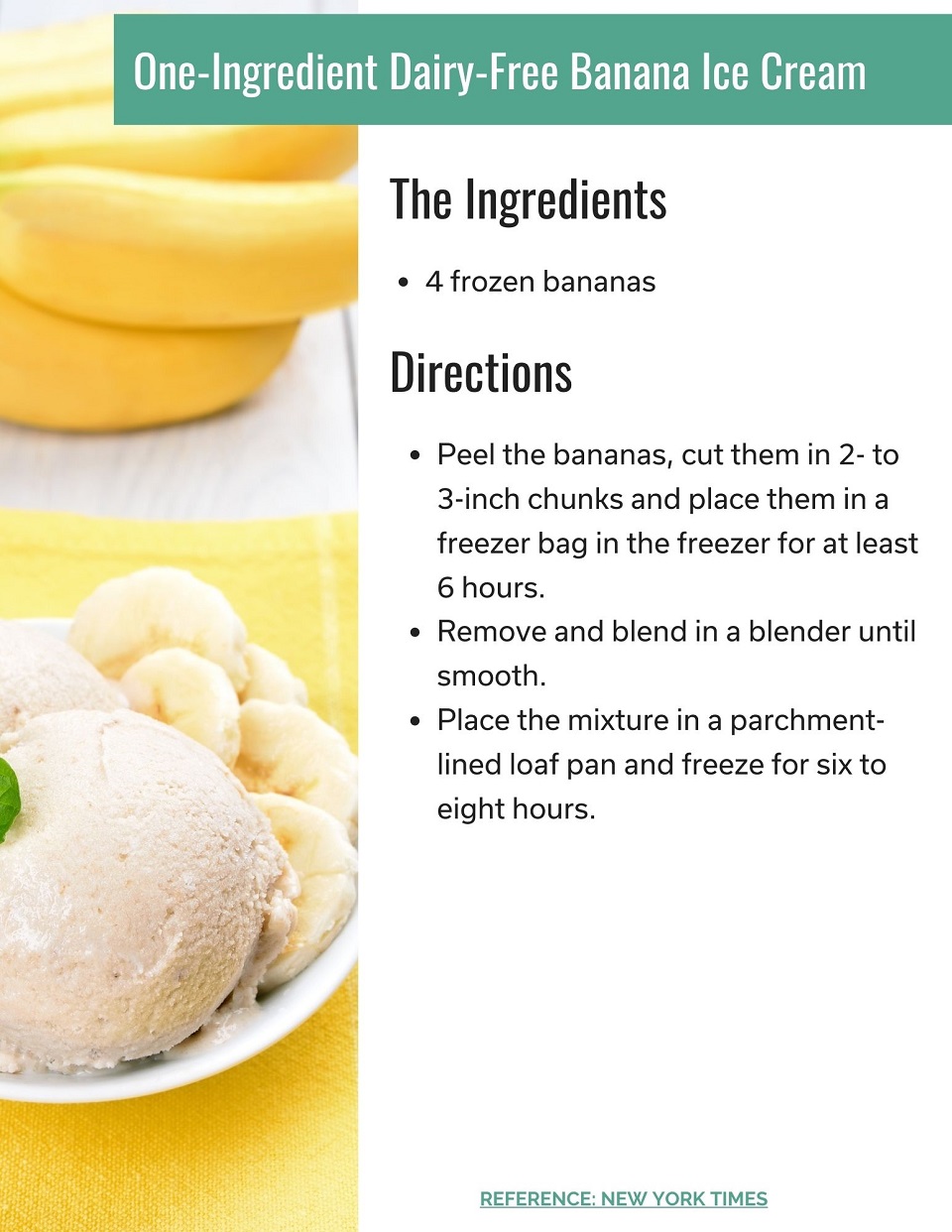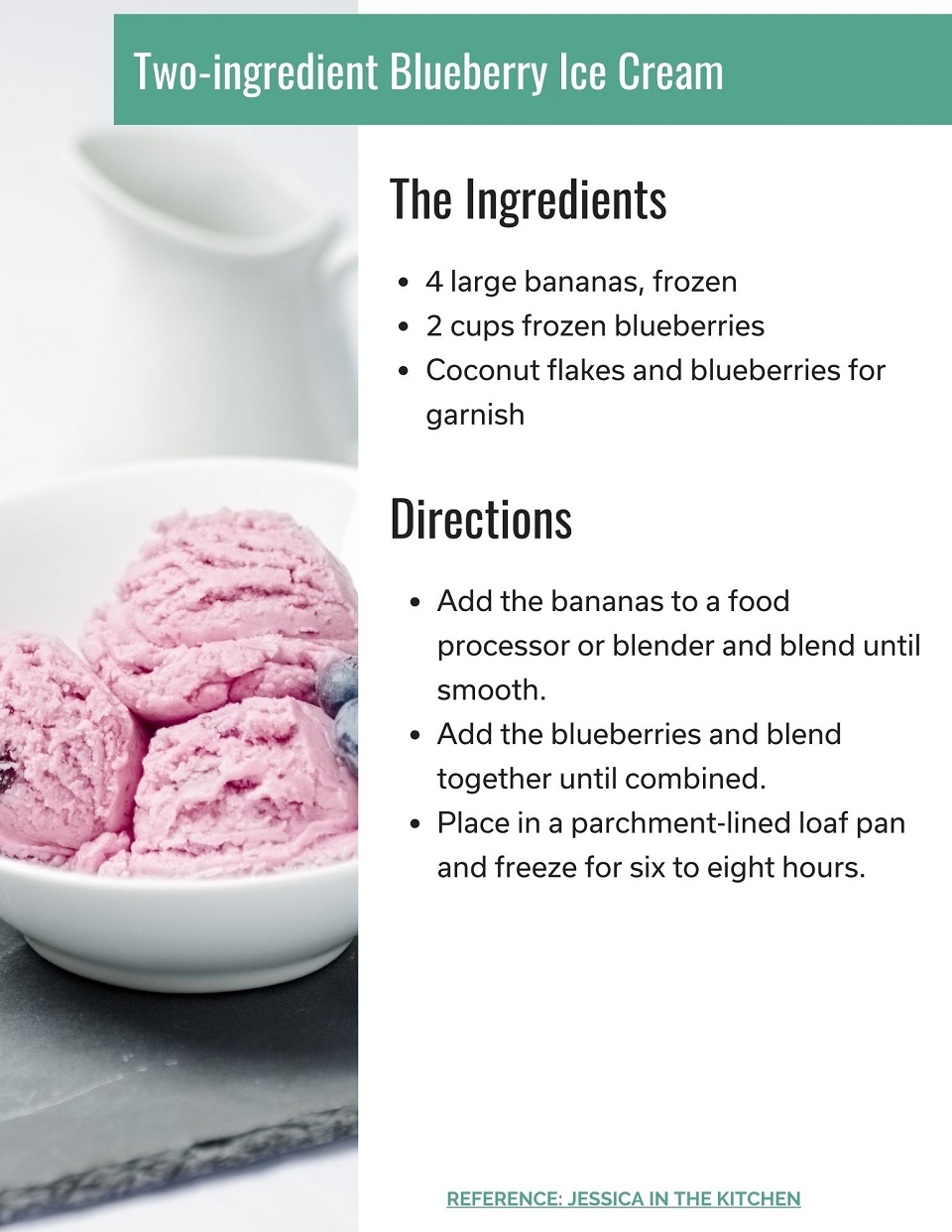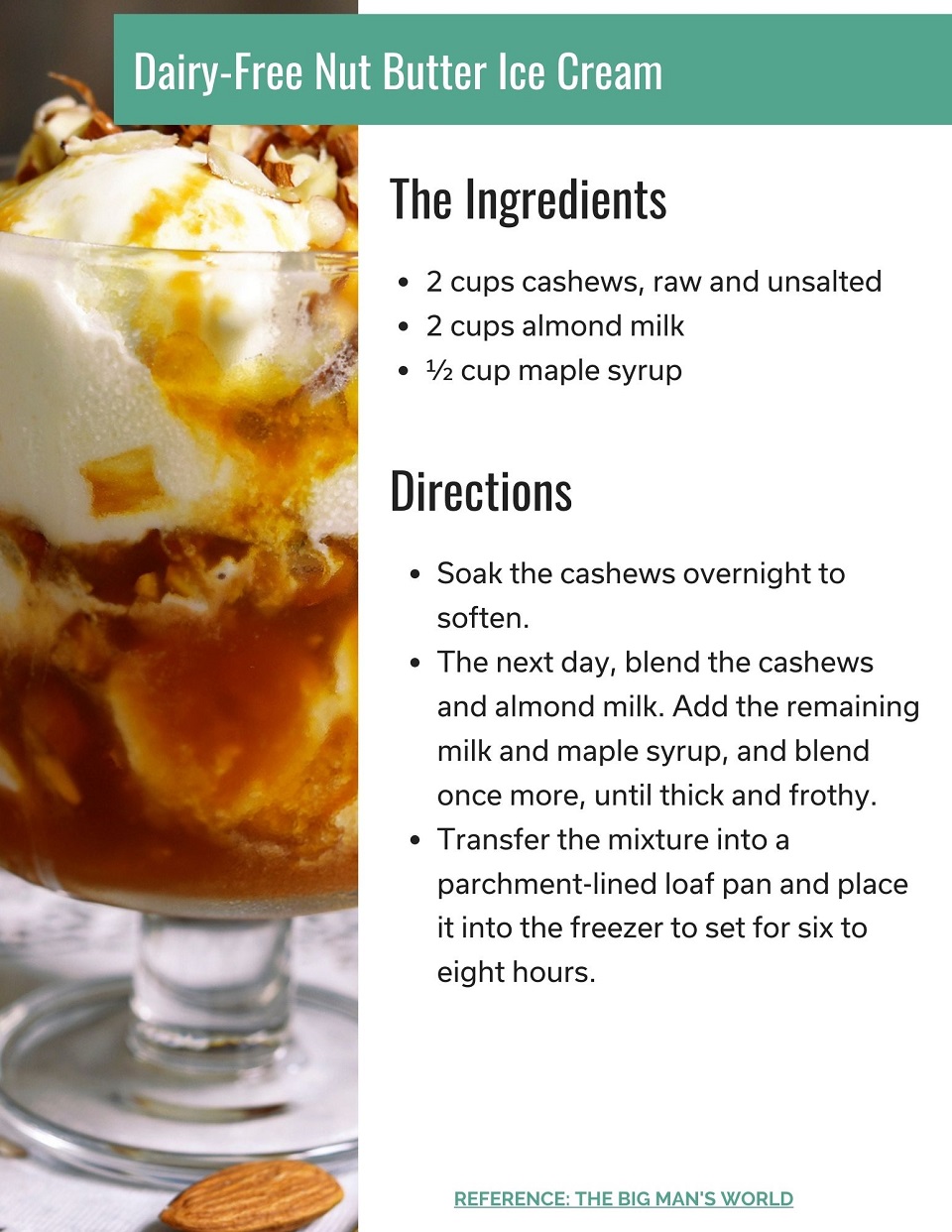Easy Non-Dairy Ice Cream Recipes to Try at Home
Posted in

For people who have food allergies or are simply trying to eat healthier, it can be difficult to come up with a grocery list that is affordable and fulfilling. Whether it’s the high cost of gluten-free foods or dairy-free options, these alternatives can be much simpler and economical when made at home.
When it comes to choosing healthier dessert options, instead of overspending on a pint of non-dairy ice cream, we rounded up several recipes to try at home that take just a few minutes to prepare.
What is non-dairy ice cream?
Non-dairy ice cream is a type of frozen treat that, as the name suggests, is free of dairy. Non-dairy ice cream shouldn’t be confused with vegan ice cream, as some dairy-free varieties still may contain animal products.
By definition, non-dairy ice cream is marketed as a “non-dairy frozen dessert.” Why? Ice cream must contain dairy ingredients, as regulated by The U.S. Food and Drug Administration.
The plant-based milk category is the most developed plant-based category, worth $2.5 billion, according to the Good Food Institute. Further, plant-based ice cream and frozen novelty sales reached 435 million in 2020.
The challenge in making non-dairy ice cream taste good is that whole milk and heavy cream are hard to replicate. The fat from milk and cream makes it rich and creamy.
Milk is also homogenized, meaning the fat particles are evenly distributed and make for a fluffy final product. Duplicating this with plant-based milks that separate easily is hard to achieve. To combat this, many non-dairy ice creams use guar gum, a thickening agent and emulsifier derived from guar beans.
People usually eat non-dairy ice cream because of their diet (vegan), for health reasons or because they’re lactose intolerant.
In the earlier days of non-dairy ice cream, companies used lactase as a substitute. Lactase is an enzyme added to dairy products to help digest lactose. However, this still wasn’t compliant with people who identify as vegan or for people who wanted to limit saturated fat from milk or cream.
The heavy cream and sugar combination of traditional ice cream poses a health risk. Eating too much saturated fat can raise your cholesterol, especially your LDL cholesterol. Eating sugar regularly can increase your risk of cardiovascular health issues (high blood pressure and heart attack), weight gain, diabetes and stroke.
How is non-dairy ice cream different from other frozen desserts?
Here is an overview of how non-dairy ice cream compares to other types of frozen desserts:
Custard: This creamier version of ice cream includes eggs. It must contain a minimum of 10 percent milkfat and 1.4 percent egg yolk.
Frozen yogurt: Frozen yogurt is made using a similar process to ice cream. The difference is frozen yogurt uses milk instead of cream and live cultures to ferment the milk.
Gelato: Gelato has less milkfat than ice cream (3.25 to 8 percent milkfat) but remains creamier due to less air whipped in – gelato is usually less than 30 percent air, while ice cream can be 50 to 100 percent air.
Ice cream: Ice cream contains at least 10 percent milk fat. There are several types of ice cream, including reduced fat ice cream (less than 25 percent total fat), light ice cream (at least 50 percent less fat), low-fat ice cream (less than 3 grams of fat per serving) and nonfat ice cream (less than 0.5 grams of fat per serving).
Italian ice: This is a frozen dessert made from water and fruit juice. Unlike sorbet, Italian ice has larger ice crystals for a grainer mouth feel.
Non-dairy ice cream: Made with plant-based milk or frozen fruits, non-dairy ice cream is free of milk or cream.
Sherbet: This is a type of ice cream that contains less than 2 percent milk fat.
Sorbet: Sorbet is a frozen dessert made from water and fruit puree. It has smaller ice crystals, which results in a smoother, creamier product.
How to make non-dairy ice cream
It’s not uncommon to find a $9 or $10 pint of non-dairy ice cream at your local grocery store. Depending on where you live, this may be two to three times more than a typical pint of ice cream.
The expensive price tag is primarily due to the cost of specialized ingredients required to make non-dairy ice cream. When commercialized in mass quantities, non-dairy ice cream needs additives, emulsifiers and thickening agents to mimic ice cream.
At home, you can control which ingredients you use. Plus, homemade non-dairy ice cream doesn’t need extra ingredients to maintain freshness. Creativity is an option, too, as you can add in just about whichever toppings you enjoy – from fresh fruit to cookies.
In general, a basic non-dairy ice cream recipe at home uses 3 cups of plant-based milk and ½ cup of sweetener (honey, agave or maple syrup). Then add your toppings and freeze in a loaf pan for six to eight hours (overnight is best). If you’re trying to watch your added sugar intake, try a frozen banana. One medium banana contains 14 grams of natural sugar.
Unsure of which plant-based milk to use in your recipe? Here are some common examples of plant-based milks used in non-dairy ice cream:
Coconut Milk: Taken from the pulp of a coconut, the milk is rich and creamy thanks to a high saturated fat content. To save on calories and fat, try light coconut milk or a blend of coconut and almond milk.
Almond Milk: This nutty milk alternative is made from blended almonds and water. Of all the plant-based milks, almond milk uses the most water – almonds make up just 2 to 3 percent of the finished product.
Cashew Milk: Despite tasting rich, cashew milk is actually of the lightest plant-based milks on the market at just 25 calories per serving.
Macadamia nut milk: Like hemp seeds, macadamia nuts boast more protein and fat than other nuts. The final product is a rich-tasting plant-based milk that bodes well for frozen desserts.
Oat milk: This creamy plant-based milk has become a popular substitute in lattes and coffee drinks. It’s thicker than most non-dairy milks, making it ideal for frozen desserts.
Pea milk: Pea milk is different from most other plant-based milks in that it comes from the flour of ground up yellow peas. The proteins from the flour are then blended with water for a thick consistency that is similar to half and half.
Rice Milk: Created as an alternative for those who have tree nut allergies or don’t like the nutty taste of almond or cashew milk, rice milk isn’t as creamy and has a watery consistency.
Soy milk: One of the original plant-based milk options, soy milk is the closest to milk in terms of protein with 8 grams of protein per cup.
Hemp milk: Hemp seeds are high in fat and protein, so non-dairy ice cream made with this milk tends to be richer than other types.
Non-dairy ice cream recipes
If you’re interested in trying non-dairy ice creams at home but are unsure where to start, consider these recipes below. They are both simple and take just a matter of minutes to prepare.
One-ingredient banana ice cream
Fresh bananas and time are all you need for this recipe. That’s it. Once the bananas harden in the freezer, it takes just a few seconds to blend them up. Bananas are both naturally sweet and sturdy enough to maintain their integrity on their own.
Three-ingredient chocolate peanut butter ice cream
Unsweetened cocoa powder and peanut butter combine with frozen bananas for this quick and easy dessert. For added texture, replace the creamy peanut butter with chunky peanut butter. You can also throw in some cocoa nibs.
Easy dairy-free chocolate ice cream
This may not replace the decadent dairy-based chocolate ice cream you’re used to. However, the presence of dates as a natural sweetener and coconut milk to keep the mixture thick make this a recipe worth trying.
Two-ingredient blueberry ice cream
Blueberries and bananas are a perfect pair for this easy frozen dessert. For added texture and crunch, try adding unsweetened coconut flakes to your finished product.
Easy avocado ice cream
One of the better plant-based fats on the market, avocados blend up well to add body and a creamy texture to any frozen concoction.
Dairy-free nut butter ice cream
When soaked and blended, cashews create a creamy texture for any recipe you use them for. Plus, soaking tree nuts makes them easier to digest. If you’re watching your intake of added sugars, either omit the maple syrup or use a natural sweetener such as frozen bananas or dates.
Dairy-free almond butter ice cream
This is yet another recipe best suited for people trying to cut down on their intake of added sugars, as fresh dates add both body and sweetness to this ice cream alternative.
For more lifestyle tips, wellness content and healthy recipes, visit the INTEGRIS Health For You blog.










